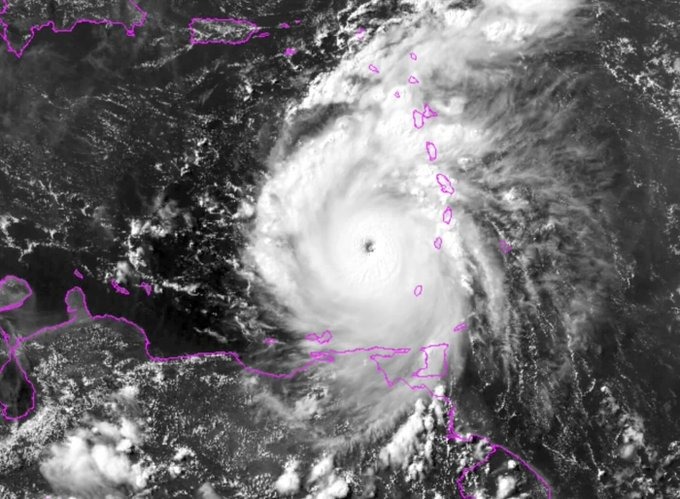![]()

Xitter from Chris Martz:
As we brace ourselves for another hurricane season, there’s always a flurry of speculation and anxiety about what’s causing these powerful storms. Recently, Hurricane Beryl made headlines as the first major hurricane of the 2024 North Atlantic season. But before we get swept away by alarmist claims linking this storm to man-made global warming, let’s take a closer look at the facts.
Hurricane Beryl is indeed notable – it’s the first hurricane to form in June since Hurricane Chris in 2012. By 11:00 AM this morning, the National Hurricane Center upgraded Beryl to a dangerous Category 4 hurricane, boasting sustained winds of 150 mph and a minimum central pressure of 956 millibars. While hurricanes in June are rare, they’re far from unprecedented. Since 1851, we’ve seen 41 hurricanes form in the North Atlantic before July.
What really sets Hurricane Beryl apart is its formation east of the Lesser Antilles in June – a first in recorded history for the North Atlantic Basin. This 173-year-old record, however, should be taken with a grain of salt. Prior to the 1970s, we lacked satellite technology to monitor tropical cyclone activity over the open ocean, meaning many storms could have gone undetected.
Hurricane Beryl underwent rapid intensification, a process where wind speeds increase by at least 30 knots (35 mph) within 24 hours. By the time the National Hurricane Center provided its 11:00 AM update, Beryl had escalated to a Category 4 hurricane. Some argue it might be the most intense June hurricane on record for the North Atlantic, but historical comparisons reveal that Hurricane Audrey in 1957 was actually more intense by pressure standards.
Despite the media frenzy, linking Hurricane Beryl to man-made climate change is problematic. TV meteorologists might insist that such powerful storms early in the season are due to global warming, but the evidence doesn’t support this. While it’s true that sea surface temperatures (SSTs) fuel hurricanes and are currently at record highs, attributing this solely to global warming oversimplifies the issue.
Yes, the Atlantic Ocean is unusually warm right now, but this isn’t directly due to man-made global warming. The spike in SSTs over the past few years is more likely attributed to changes in atmospheric aerosols. In 2020, the International Maritime Organization adopted a new standard limiting sulfur content in shipping fuel. Sulfur dioxide, a powerful aerosol, previously reflected solar radiation. With reduced sulfur dioxide emissions, more solar radiation has been absorbed by the oceans, significantly warming them.
To get a powerful cyclone, favorable atmospheric conditions are essential. Despite warm SSTs, hurricanes won’t form without conducive atmospheric factors. For Hurricane Beryl, low vertical wind shear – the change in wind speed and direction with altitude – allowed the storm to intensify. Interestingly, climate models predict more El Niño events with global warming, increasing vertical shear over the Atlantic and typically reducing hurricane formation.
In summary, while Hurricane Beryl is impressive, attributing its formation to man-made global warming is misleading. The current scientific understanding points to changes in atmospheric aerosol concentrations and natural variability as more likely explanations. As we continue to navigate hurricane season, it’s crucial to ground our understanding in robust scientific evidence rather than alarmist rhetoric.
AI produced from video transcript

